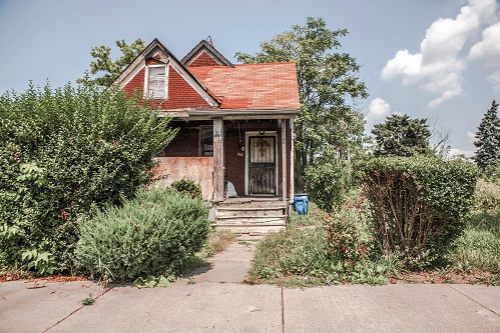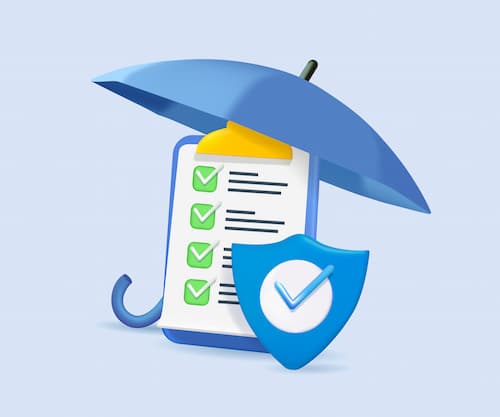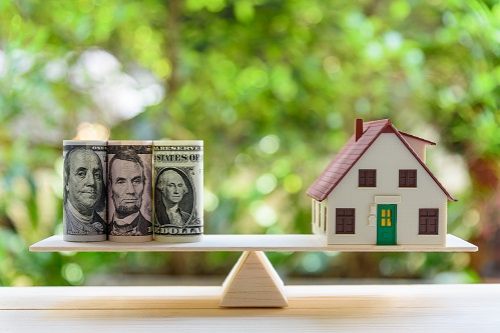Why is home insurance so expensive in Texas?
Like Florida and Louisiana, extreme weather is key to Texas’ mounting property insurance troubles. However, each state has its own complexities, and Texas is no different. In 2024, the average cost of home insurance in Texas rose by 28.1%, according to S&P Global.
Texas is susceptible to a number of different severe weather events, including hail. According to the Insurance Information Institute, in 2022, the latest year available, the largest percentage of property damage came from hail at 40.7%. And Texas has the largest number of major hail events, where hailstones are one inch or larger in diameter, of any state in the country, with 878 in 2024 alone. The state with the next highest number was Kansas with 495. This is according to the U.S. Department of Commerce Storm Prediction Center and the National Weather Service.
The NWS data also shows Texas as having the highest number of tornadoes in 2024, with 169. Iowa and Nebraska tied for second with 131 each.
Max Dugan-Knight, a climate researcher at Deep Sky Research, a climate research firm, highlighted two areas of concern. First, there is the increased risk of wildfire, especially in western Texas. He points to a combination of drought and more frequent heat waves. “These conditions plus high winds and available fuel lead to dangerous wildfires,” he says.
The second area of concern is hurricanes and flooding. “A previous Deep Sky Research report found that extreme hurricane rainfall has become 300% more common since 1980 and that Gulf Coast states are most vulnerable to this extreme rainfall. Flooding is an enormously costly kind of property damage so it's no surprise that Texas homeowners are noticing rates increasing,” Dugan-Knight says.
In addition to weather and wildfire risks, Texas faces increasing repair and replacement costs and the litigation costs that other states are dealing with.
All of these natural hazards create a situation where homeowners may be more likely to file claims, and the cost of repairs, rebuilding, and replacing their homes or belongings will be higher. This results in higher premiums and insurers becoming more cautious when issuing new policies.
Are home insurance companies leaving Texas?
Yes, some insurers have either stopped selling new policies or scaled back their presence in Texas. In 2024, Progressive Insurance stopped writing new policies in Texas, and in some areas, is no longer renewing existing policies. Other companies, such as Lemonade and Foremost Insurance (a subsidiary of Farmers Insurance), are scaling back their operations in the state as well.
Lemonade has stopped selling new homeowners and condo insurance policies in several counties, including:
- Angelina
- Brazos
- Ellis
- Grayson
- Gregg
- Johnson
- Lubbock
- Potter
- Randall
- Tom Green
- Travis
- Williamson counties
Foremost Insurance is also reportedly scaling back its presence in Texas, with many homeowners receiving non-renewal notices. A Farmer's spokesperson told the Houston Chronicle, “Importantly, more than 90% of our existing customers in Texas with Foremost property insurance policies are not affected by this action.”
What is the result of mounting Texas hail claims and costs?
Nonrenewals and unaffordable rates are the biggest effect of hail and other severe weather claims.
The Texas Department of Insurance issued an emergency order that gave affected homeowners an extension to apply for coverage with the Texas Windstorm Insurance Association (TWIA), the state’s insurer of last resort. TWIA provides wind and hail insurance for property owners in designated catastrophe areas along the Texas Gulf Coast.
Over the past couple of years, the TWIA has seen a massive jump in the number of residential policies, average amount of coverage per policy, and total amount of coverage (buildings and contents.
- Residential structures covered: 184,223 residential structures covered in 2022 to 243,283 in 2024
- Average amount of coverage per policy: $225,553 in 2022 to $297,263 in 2024
- Total coverage (buildings and contents): $63.2 billion in 2022 to $105.6 billion in 2024
Earlier this year, the TWIA withdrew $462.7 million from its Catastrophe Reserve Trust Fund (CRTF) to pay for losses from Hurricane Beryl, which hit Texas in 2024. This left the CRTF with a balance of $8 million heading into the 2025 hurricane season.
There is some good news for homeowners, though. In July 2025, the TWIA’s Actuarial & Underwriting Committee recommended that the board not request a change in homeowner premiums in 2026.
What to do if your Texas homeowners policy is canceled or nonrenewed
If you get a nonrenewal notice in the mail, don't panic. There may be an issue that you can resolve to keep your coverage; otherwise, you will be given time to find new coverage. Take the following steps.
- Call your insurance company. Sometimes you can reverse the nonrenewal by providing evidence of a roof upgrade or completing some repairs that needed doing.
- Start shopping around. As soon as you get the notice, start requesting home insurance quotes. Don't wait to find out if the issue will be resolved; if it's not, you'll have new quotes ready.
- Seek expert help. If you're having trouble finding insurance, reach out to a local insurance agent or broker who can help you find a new insurance policy.
- Contact the Texas FAIR plan. The Texas FAIR plan is the insurance option of last resort. If you can't get coverage elsewhere, the plan will help you.
What can Texas homeowners do to save on insurance?
Home insurance rates in Texas are soaring, so what’s a homeowner to do other than just keep paying higher premiums?
- Start by ensuring you are already getting the best deal on your insurance. Have you taken advantage of any discounts that may be available, such as bundling policies for home, auto, boat or RV?
- Next, see if you belong to an organization that may partner with an insurance carrier. Many companies have organized partnerships with carriers for discounted rates on insurance. Also, consider college alumni discounts or deals offered to trade or professional groups such as doctors, nurses, lawyers, accountants and engineers.
- Get some competing quotes. Don’t take it for granted that your current insurance carrier is giving you the best deal. Carriers look at risk profiles differently, and while you may be considered higher risk with one, you may not be with another.
Ron Wadley, founder and co-owner of Insurance for Texans, an independent brokerage in the greater Dallas-Fort Worth region, says he now recommends clients shop for rates yearly. He used to recommend it every three years, but the market is changing so quickly that it can now make a big difference.
He also says to think carefully about filing a claim. If the repair cost is only a little more than your deductible, it might benefit you in the long run to pay for the repair yourself. Your rates are less likely to jump.
Sources:
- Deep Sky Climate. “Frequency of Deadly Hurricane Weather has Jumped 300%” Accessed August 2025
- Insurance Information Institute “Trends and Insights: Texas: A Complex Mix of Risks.” Accessed August 2025
- S&P Global Market Intelligence. "U.S. homeowners rates rise by double digits for 2nd straight year in 2024.” Accessed August 2025.




